There are lots of ways to make money with PLR. You can repurpose the product and sell it. You can use it to inspire a line of products. You can repackage, recolor and redesign it and sell it.
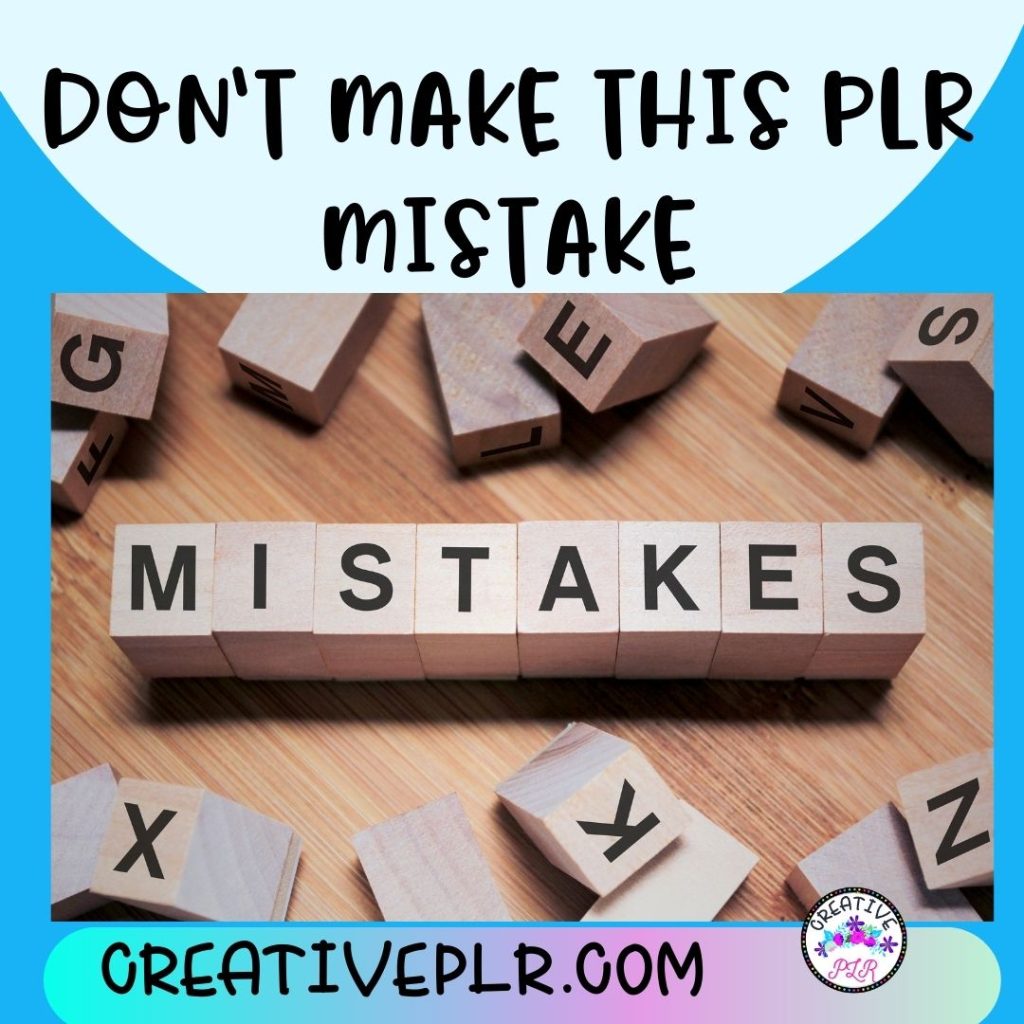
Depending on the license, you can use it as a lead magnet to attract new subscribers or give away to subscribers. You can set up a membership or vault to access helpful templates. You can create a video or audio and post to various social media platforms.
But sadly, most people who buy PLR fail for one simple reason. (A mistake I’m often guilty of committing as well.)
Here’s the mistake: I buy PLR then pigeon hole it away for later. Then I completely forget about it. I even created folders: Today, This Week, This Month to motivate myself into doing something with the products in that time frame. But—those folders became storage.
The Number 1 Mistake
YES, The #1 mistake most people make with PLR is NOT EVER USING IT!
It’s far too east to get in the habit of buying content with the best intentions, then never getting it online where it can help people and earn you money. And with so many bundles each month, some of us are on bundle overload and our computers overflowing.
I can completely understand this. I have a reminders to back up my computer each month to a 14T back up drive. Then I delete some stuff from my computer. I have visions of having that back up drive full of PLR that is never used. I now create a folder called “Repurpose” where I put bundle downloads. If after looking at it, I cannot use it for selling, inspiration, or my catalog then it must go.
But with this process, you can begin using that PLR and earning some money instead of storing it.
Organize First
I use Trello to organize my PLR products but you could use Airtable, Google sheets or Excel. In Trello, a List contains several cards. I create a template card so I can quickly add cards with the same information without retyping. I make a list for each bundle, then a card for each product.

Some of the products come with posters, social media posts and sometimes there are mock ups. You can use these posters as separate products. You can also use the social media posts to schedule. I like to take the social media posts that some with products and tweak them with different colors and different images.
Information about the products include pages, list price, color scheme, ideas inspired, original shop, I also print the bundle page that shows all the products so I can see the images that were used to display the product. I also list where the product is stored on my computer–name of folder so I can find it easily.
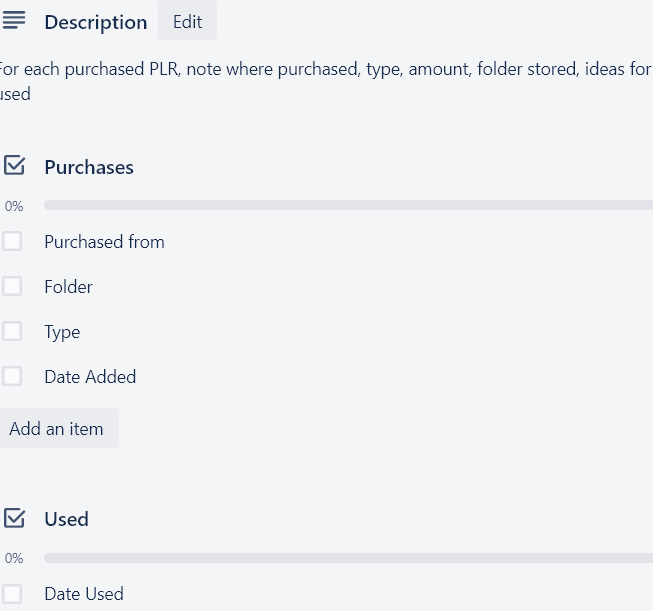
Once I have organized my PLR, then I am ready for the 4 step process to get repurposed.
Step 1: Download and Evaluate
When acquiring products with private label rights, the trick is to immediately evaluate the package.
Download it right away. Unzip the folder. Read the rights and then move on immediately to read the text, listen to any audio, watch any videos. Basically assess the product yourself, as if you are thinking about buying it (and not already have it).
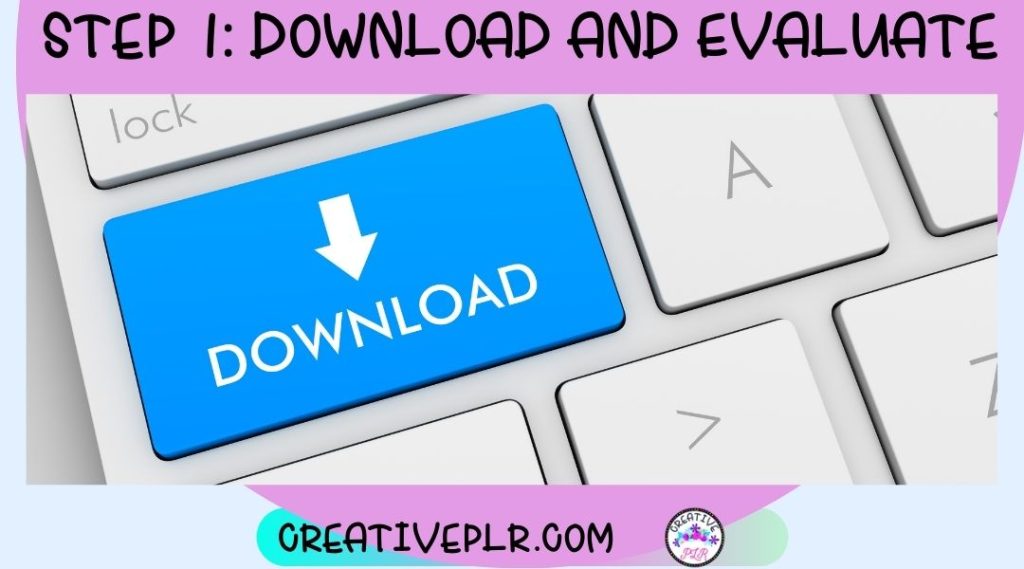
Maybe you want to make notes about anything that is missing? Was there a page or idea that you can include that is different? Does it include a checklist? Can it be converted to a challenge or course?
If it is a course, can you create a planner from the info? Create a journal or workbook from the ideas–either printable or digital?
Make notes about how you can use the product. If it is a planner, will you recolor/edit and keep as a planner. Can you repurpose it as lead magnet and get it up on your website? Can you create a checklist from it? Does the color scheme inspire you to create other products that are coordinated?
Step 2: Repackage and Brand
Decide which parts of the PLR product you want to use in your own package and delete the fluff. I tend to delete most of the ecovers and social media images that are included with most products. I prefer to make my own in my own colors in Canva. Create a new folder and drag and drop all the stuff you’ll be using into that new folder. Create new covers and offer extra covers so customers have options.

Be careful about reusing any clip art or images. Typically images are not to be reused or resold unless the license specifically states this. Read licenses carefully. If images cannot be passed on to customers, then you will need to create or purchase some clip art.
If it is written PLR content, then decide if you will use to create a blog. If so, rewrite and add the title to your blog schedule. When you rewrite you are adding your own stories, ideas and writing from your own perspective.
If it is printable planner/journal , can you change it to digital content? Repurpose the pages and create digital components? Consider including stickers, clip art and/or alphabets to the original package to add more value.
Step 3: Upload and Test
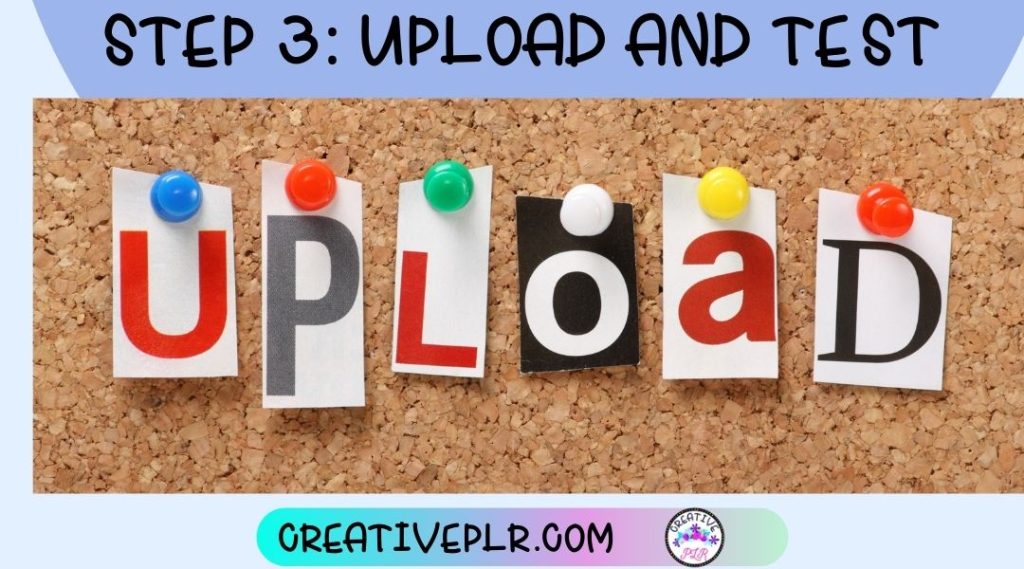
Once your product is complete, follow these steps
- Add terms of use to the folder with product
- Compress file or zip file
- Upload to a file storage system (I use dropbox) and copy link
- Create images for sales page, shopping cart and website.
- Make landing page on website, ESP, shop or store
- Write description
- Set Price
- Add product images
- Add buy button, connect to sales page, shopping cart
- In shopping cart, add your product link to the fulfillment page
- Test buy buttons, test shopping cart, test download links—TEST!
Step 4: Promote it!
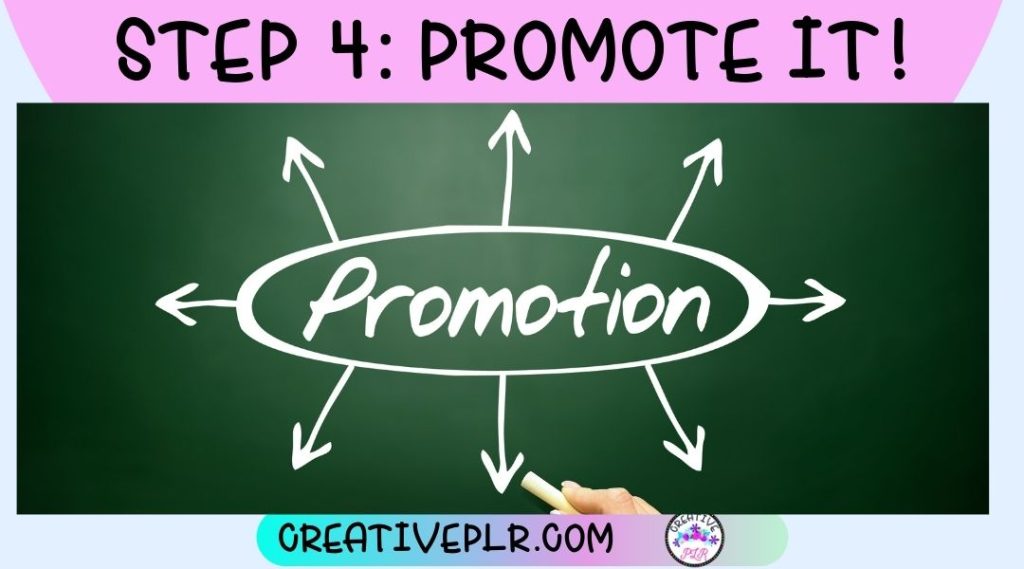
Unfortunately, this is where a lot of people get stuck. The have a great product to sell as their own but no idea how to sell it. The thing is, in order to make sales, you need to get traffic to your sales page! Recruit affiliates, reach out to other sellers to see if they would promote your product.
If you have an opt-in list — you just send out a series of email solos. If you have affiliates, send out promotional materials to them. If you have a Facebook or twitter following, you can get the word out there. But if you have no list or following to speak of, then you need to get traffic other ways.
You can write a blog post about the problem your product solves. Example: If you created a travel planner, write a blog post about all the details in traveling: packing, arranging for pet boarding, plane tickets, excursions, etc. Then show the planner pages and how this will help customers be more organized.
Post to Pinterest with several pins over 2 months to generate interest. Send the link of the Pin to ether your blog post or directly to the landing page of the product. Post to Instagram. Create an Instagram story about the product, or a TikTok video. Post to Facebook and Tweet about it.
Above all, stop storing PLR. From every product you should have a purpose: Inspiration, Learning, Skeleton or Sales
Some items I have downloaded were used just to inspire another idea. Whether that idea was a color palette, they way the images were used to enhance the content, or the mood the content evoked. I consider the inspiration to have value.
Some items were dissected to understand how to recreate products. What order were they arranged, how were the tables created, how were the fonts used, how was the shading used to add color, interest. These were all for learning how to do things.
Other items were stripped and used as skeleton templates that I kept for future ideas. I have tons of templates I can look at—like a catalog. While I never copy from others, I can take other ideas and put my own spin on them.
And finally some of those products are recolored and added to my ETSY store or used as an optin for my website. Depending on the original license.
My hope is that you continue to download products you love that will inspire you, BUT you also start using those products. Use them to serve your audience, use them to sell, give them away to gain traffic to your website. Whatever you do, just use them.
Looking to avoid some other common business mistakes? Check out this BLOG POST on 4 BUSINESS MISTAKES TO AVOID and 8 MINDSET MISTAKES THAT AFFECT YOUR BUSINESS.